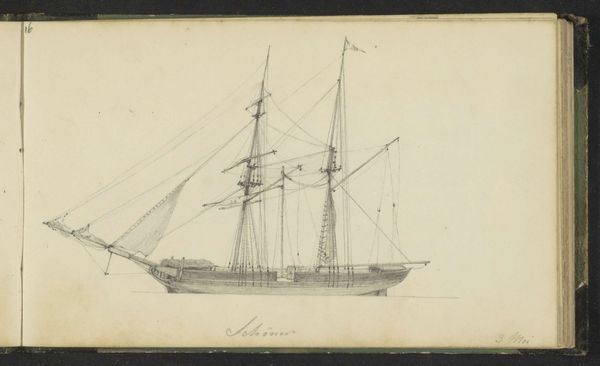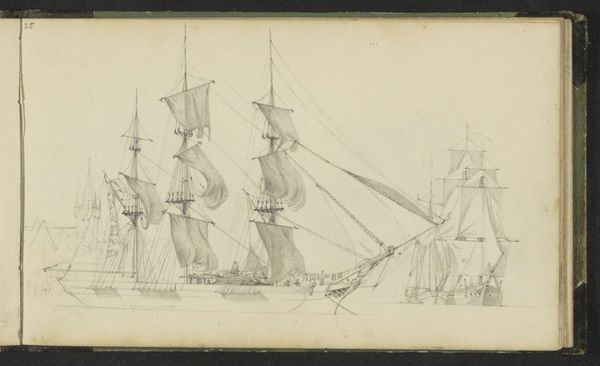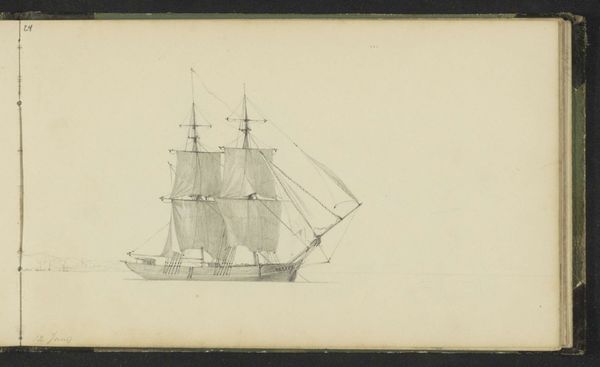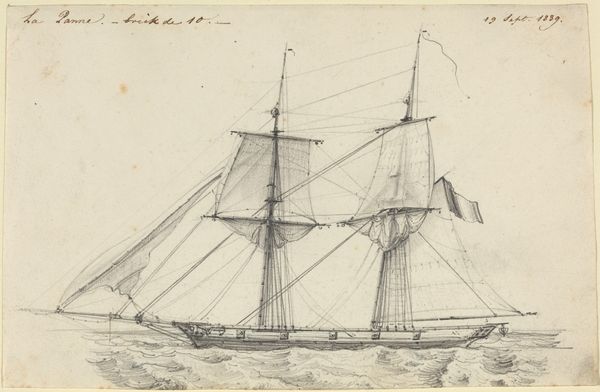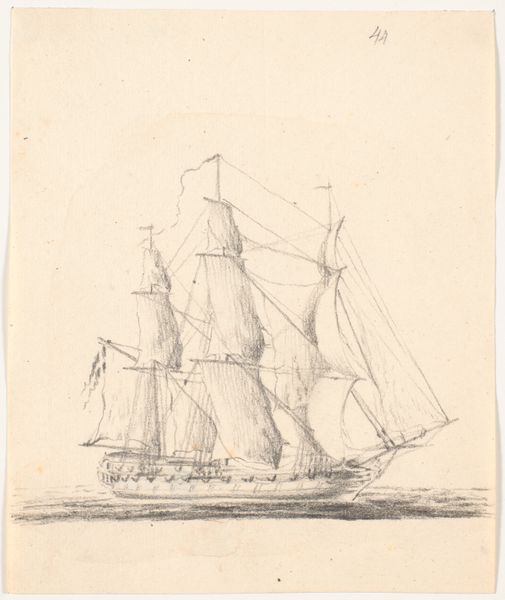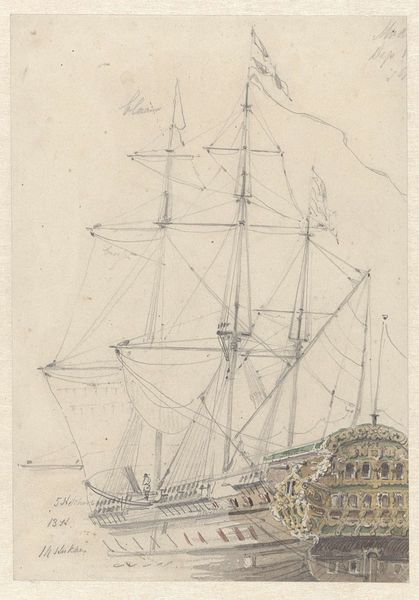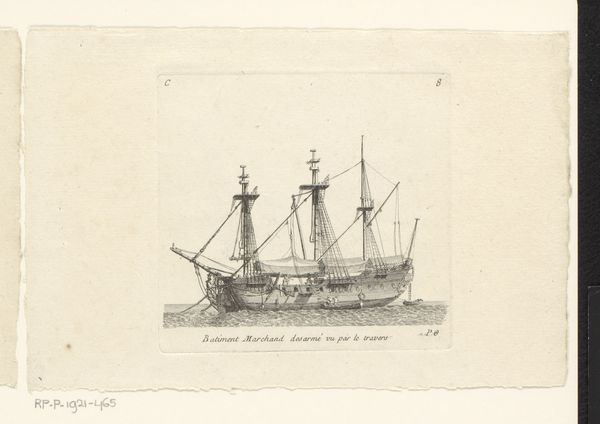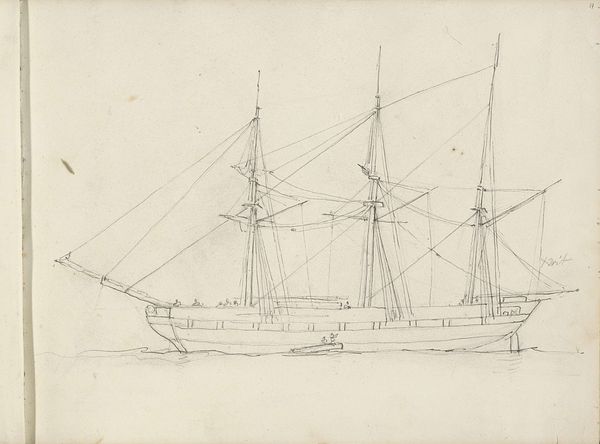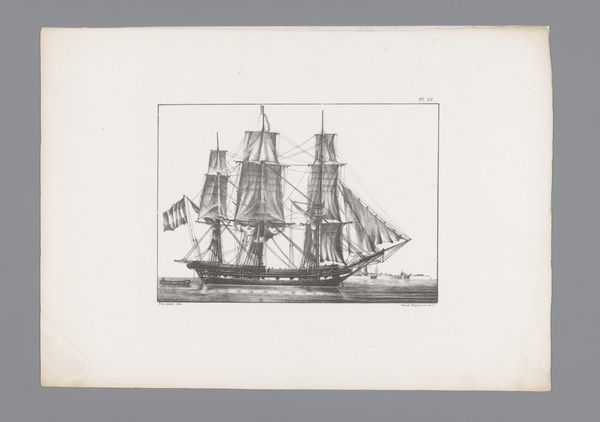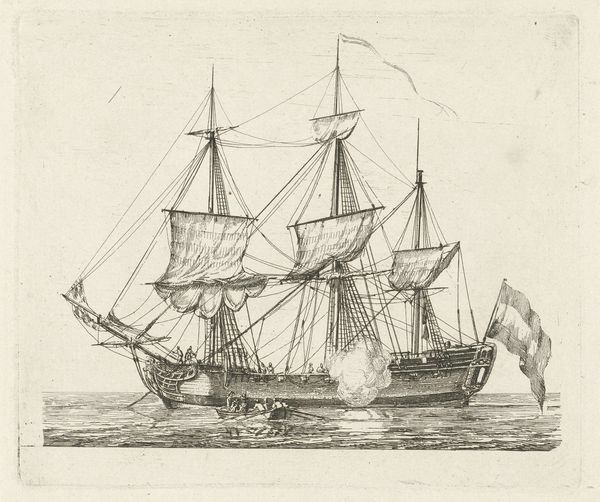
drawing, paper, pencil
#
drawing
#
landscape
#
paper
#
romanticism
#
pencil
#
line
#
realism
Copyright: Rijks Museum: Open Domain
Editor: We are looking at "Bark aan een kade," or "Bark on a Quay," a pencil drawing on paper by Hendrik Abraham Klinkhamer from around 1843 or 1844. There's a serene, almost melancholy feel to it. The ship, rendered with such precise lines, appears still, almost ghostlike, against the pale paper. What do you see in this piece? Curator: Beyond its apparent realism, I see a powerful statement about the social and political landscape of the time. Consider the Romanticism movement's fascination with nature, but also its tendency to idealize the past. This ship, frozen in time, represents not just a vessel but also the complex entanglement of trade, colonialism, and the exploitation of both human and natural resources. Editor: Could you elaborate on the "exploitation" aspect? I hadn't considered that. Curator: Certainly. These ships weren't merely vehicles of commerce; they were instruments of imperial power. They facilitated the transportation of goods, yes, but also the subjugation of populations and the extraction of wealth from colonized lands. This seemingly peaceful image, therefore, carries a weighty historical burden. We need to ask ourselves whose stories are not being told here. Editor: So, the artist might be unintentionally highlighting those power dynamics, even while focusing on the aesthetic of the ship itself? Curator: Precisely! And even the seemingly neutral style of Realism contributes to this. By presenting the ship in such a straightforward manner, Klinkhamer perhaps inadvertently normalizes the systems of power it represents. This raises crucial questions about representation, complicity, and the role of the artist in society. Do you see it now? Editor: Yes, absolutely. It completely shifts my perspective. I initially saw only a beautiful drawing, but now I see it as a document implicated in complex social and economic systems. Curator: That’s the power of engaging with art through a critical lens. It challenges us to look beyond the surface and interrogate the deeper structures at play. Editor: Thank you; I will never look at a maritime scene in quite the same way!
Comments
No comments
Be the first to comment and join the conversation on the ultimate creative platform.
